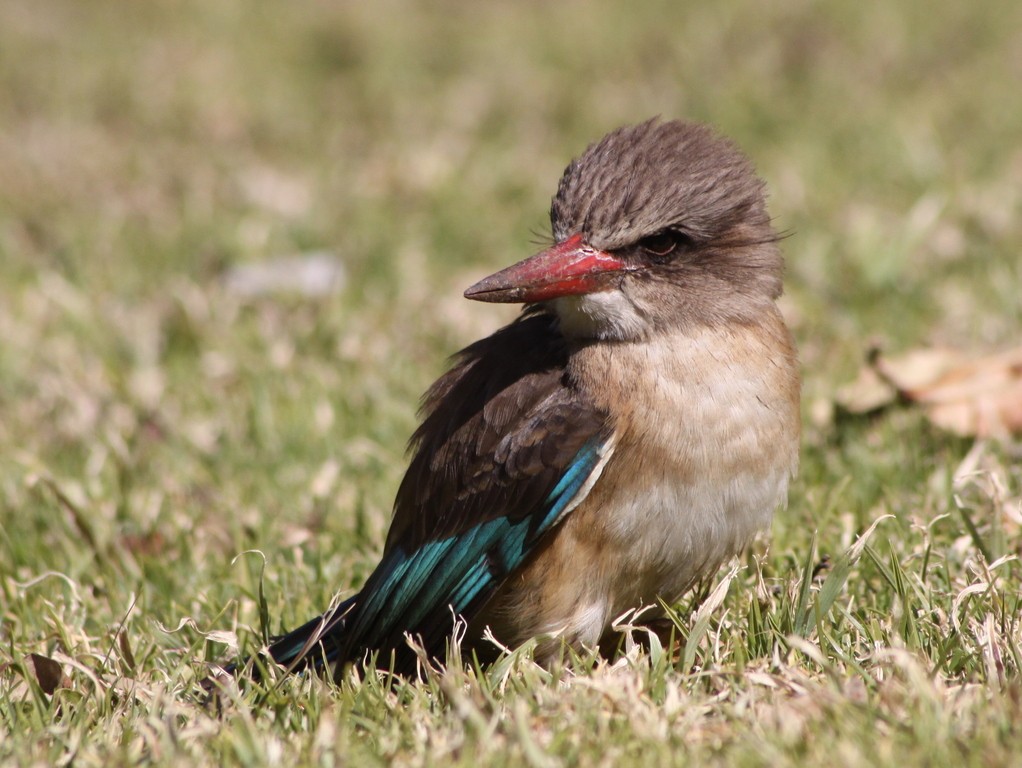Brown-hooded Kingfisher
A species of Typical Woodland Kingfishers Scientific name : Halcyon albiventris Genus : Typical Woodland Kingfishers
Brown-hooded Kingfisher, A species of Typical Woodland Kingfishers
Botanical name: Halcyon albiventris
Genus: Typical Woodland Kingfishers
Content
Description People often ask General Info
 Photo By derekkeats , used under CC-BY-SA-2.0 /Cropped and compressed from original
Photo By derekkeats , used under CC-BY-SA-2.0 /Cropped and compressed from original Description
The brown-hooded kingfisher is about 22 cm (8.7 in) long. The head is brown, with blackish streaks. There is a broad buffy collar above the brownish-black mantle. The wing coverts are mostly brownish-black, and the secondary flight feathers are turquoise. The rump is azure-blue. The chin is white, the breast is tawny with some dark streaks, and the belly is buffy. The beak is red, tipped brown, the legs are carmine, and the eyes are dark brown. The female has dark brown upperparts, and its underparts are more streaked than the male. The juvenile bird is duller, with scalloped whitish underparts. The subspecies differ in shade and streaking. 
Size
22 cm
Nest Placement
Cavity
Feeding Habits
Brown-hooded Kingfisher primarily consumes insects like locusts and beetles, along with other invertebrates, small vertebrates, and occasionally fish. It typically perches quietly and swoops down on prey, which it then batters before swallowing, with rare unsuccessful attempts at fishing.
Habitat
Brown-hooded Kingfisher's habitat includes woodlands, scrublands, and grasslands with trees across Sub-Saharan Africa up to 1800 meters. Preferring forest clearings and edges for hunting, it adapts to both natural and altered terrains, including plantations and suburban gardens. Aquatic proximity is non-essential, with some populations showing seasonal movements.
Dite type
Piscivorous
People often ask
General Info
Feeding Habits
Bird food type
Behavior
This kingfisher is generally seen alone or in pairs. It usually forages on the ground, mainly feeding on insects, and also eating scorpions, reptiles, small birds, rodents and fishes. Eating snakes and lizards as long as 25 cm (9.8 in) has been reported. The song, given while vibrating the wings, is a tiiiu or ki-ti-ti-ti trill, and a sharp cheerit is given when alarmed. The breeding season is mainly between September and April. A burrow nest is dug in a river bank, gully or road cutting. The family stays together for a few weeks after breeding. 
Distribution Area
This kingfisher is found in Sub-Saharan Africa, in Gabon, Congo, the Democratic Republic of the Congo, Angola, Kenya, Tanzania, Zambia, Somalia, Mozambique, Malawi, Zimbabwe, Botswana, Namibia, South Africa and Swaziland. It occurs below 1,800 m (5,900 ft) in elevation, living in woodland, grassland with trees, scrubland, forest edge, and also cultivations, parks and gardens. It sometimes occurs near water, and can adapt to suburban habitats. Most populations do not migrate, but there is evidence of seasonal movements in some areas. 
Species Status
Not globally threatened.